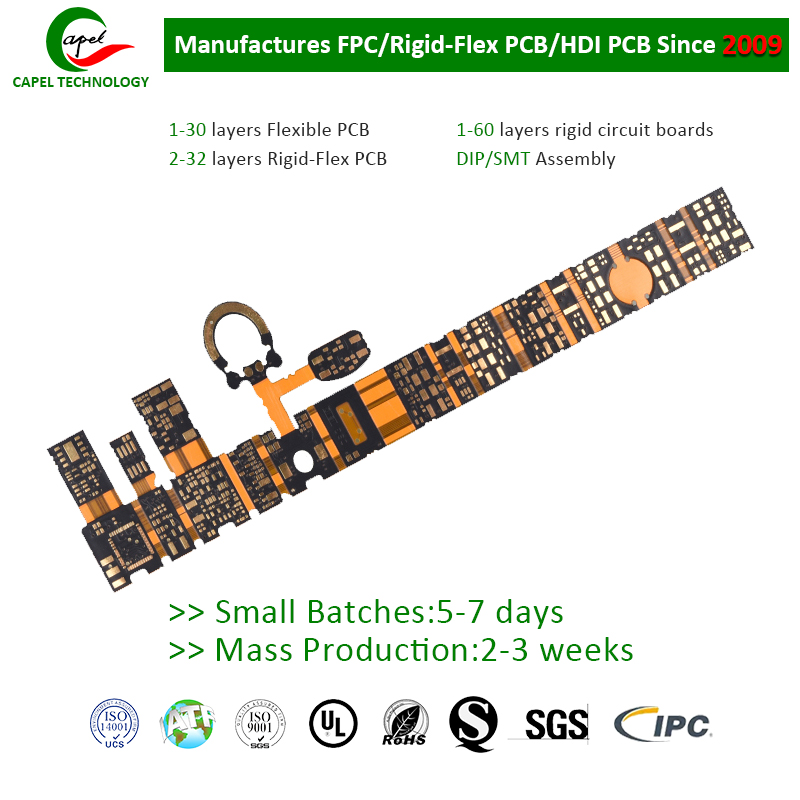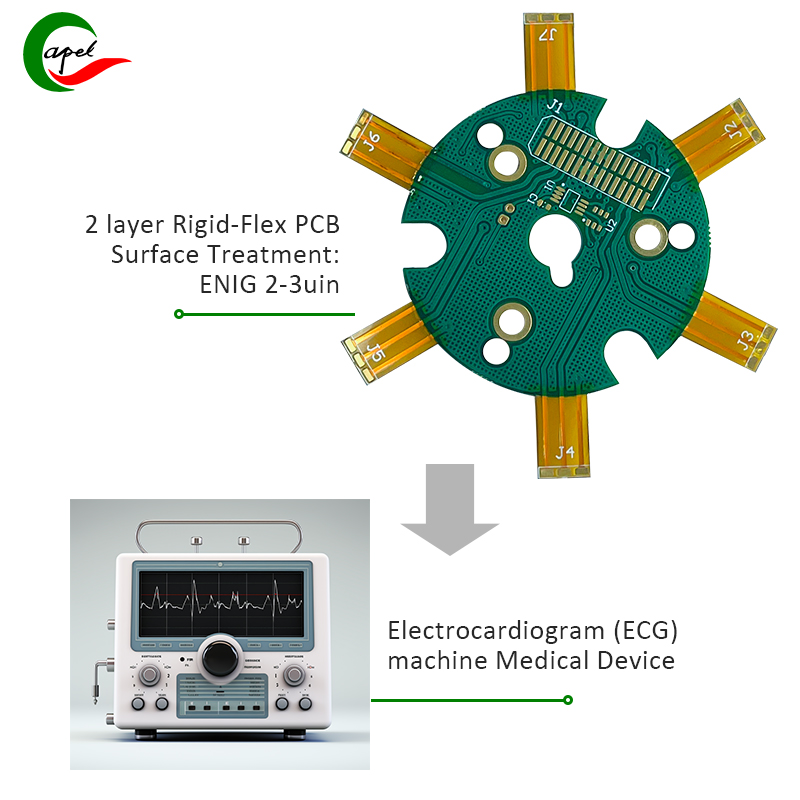Introduction: Revealing the advantages of 2-layer rigid-flex PCB
The evolving technology landscape requires greater efficiency, flexibility, and versatility in the design and manufacturing of printed circuit boards (PCBs). To meet this need, 2-layer rigid-flex PCBs emerged as a high-performance solution that provides unparalleled flexibility and reliability. In this comprehensive guide, we’ll delve into the nuts and bolts of 2-layer rigid-flex PCBs, exploring their construction, design, manufacturing processes, and practical applications in the medical industry.
What is a 2-layer rigid-flex board?
2-layer rigid-flex PCB represents an innovative combination of rigid and flexible PCB technologies. These PCBs feature alternating layers of rigid and flexible materials, allowing seamless integration of rigid and flexible sections within a single PCB. The combination of these two technologies results in a highly adaptable, versatile and durable solution that is ideally suited for a variety of applications.
2 layer rigid-flex PCB stackup
2-Layer Rigid-Flex PCB layup plays a vital role in determining its performance and functionality. A typical 2-layer rigid-flex PCB stackup consists of alternating layers of rigid and flexible materials, with the rigid portion providing structural support and the flexible portion enabling dynamic bending and shaping. Understanding stackup complexity is critical to optimizing the performance and reliability of the final PCB design.
Single-sided 2-layer flex-rigid board
Single-sided 2-layer rigid-flex PCB consists of a single-layer flex circuit with a rigid portion on one side. This configuration provides a balance between flexibility and structural rigidity, making it suitable for applications where space and weight constraints are critical. The single-sided design simplifies component interconnection and enhances adaptability to complex form factors.
Double-Sided 2-Layer Rigid-Flex PCB
In contrast, a double-sided 2-layer Rigid-Flex PCB is characterized by rigid portions on both sides of the flexible circuit. This dual-sided configuration increases routing density and improves connectivity, making it ideal for applications with high component density and interconnect requirements. The double-sided design provides enhanced design flexibility and facilitates efficient signal routing in compact PCB assemblies.
2-Layer Rigid-Flex PCB Design
Designing a 2-layer rigid-flex PCB requires a thorough understanding of rigid and flex PCB design principles. The integration of rigid and flexible sections requires meticulous attention to detail, as well as advanced design tools and techniques. Factors such as bend radius, material selection, and signal integrity must be carefully considered to achieve optimal design performance and reliability.
2-layer rigid-flex PCB prototype
Prototyping is a key stage in the development of 2-layer rigid-flex PCB. Prototyping allows engineers to validate a design, test its functionality and identify any potential issues before full-scale production. With rapid prototyping capabilities, designers can iterate and refine PCB designs to ensure the final product meets the stringent performance and reliability standards required for high-performance applications.
2-Layer Rigid-Flex PCB Manufacturing
Manufacturing a 2-layer rigid-flex PCB involves a precise and complex process that combines rigid and flexible PCB manufacturing techniques. The manufacturing process includes lamination of rigid and flexible layers, drilling, plating, etching and assembly, all of which help create a strong and reliable PCB. Advanced manufacturing techniques and strict quality control measures are critical to ensuring the integrity and performance of the final product.
2-Layer Rigid-Flex PCB Process
The process of developing a 2-layer rigid-flex PCB consists of a series of consecutive steps, from initial design and prototyping to manufacturing and assembly. Each stage of the process requires meticulous attention to detail, precise execution and thorough testing to ensure the functionality and reliability of the final PCB. Collaboration between design engineers, manufacturers and assemblers is critical to optimizing the entire process and delivering high-performance PCB solutions.
2-Layer Rigid-Flex PCB Application Cases – Medical Industry
The medical industry presents a compelling application case for 2-layer rigid-flex PCBs due to its stringent requirements for compact, reliable and durable electronic devices. In medical devices such as patient monitoring devices, implantable medical devices, and diagnostic instruments, 2-layer rigid-flex PCBs play a vital role in achieving miniaturization, biocompatibility, and long-term reliability. The seamless integration of rigid and flexible parts in the 2-layer rigid-flex PCB makes it ideal for medical applications that require high performance in challenging environments.
2 Layer Rigid Flexible PCB Board Making Process
Conclusion: Realizing the potential of 2-layer rigid-flex PCB
In summary, 2-layer rigid-flex PCBs represent the pinnacle of innovation in high-performance PCB solutions. Its unique combination of rigid and flexible technologies provides unparalleled adaptability and reliability, making it indispensable in a wide range of applications across industries. With their superior versatility and performance, 2-layer rigid-flex PCBs are expected to continue to drive technological advancements, especially in high-tech industries such as the medical industry, where reliability, miniaturization and performance are critical. By understanding the complexities of 2-layer rigid-flex PCBs, designers and manufacturers can realize their full potential and create cutting-edge electronic solutions to meet the ever-changing needs of the modern world.
Post time: Jan-30-2024
Back








